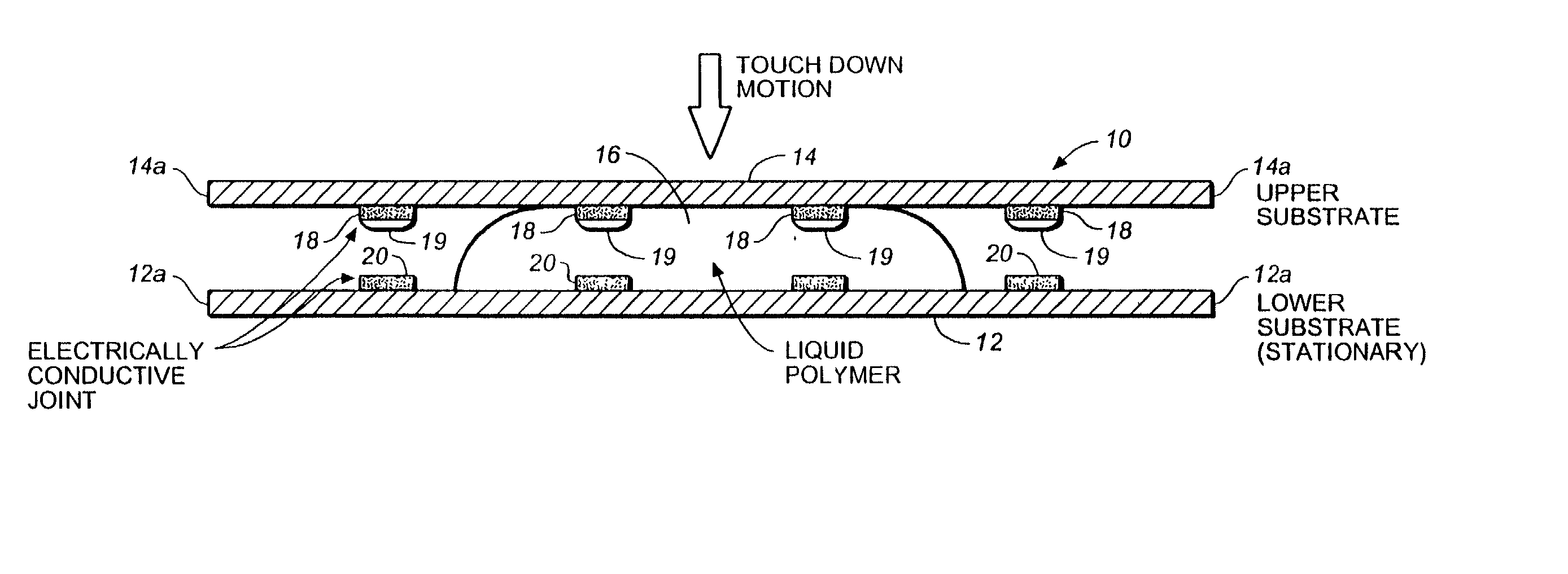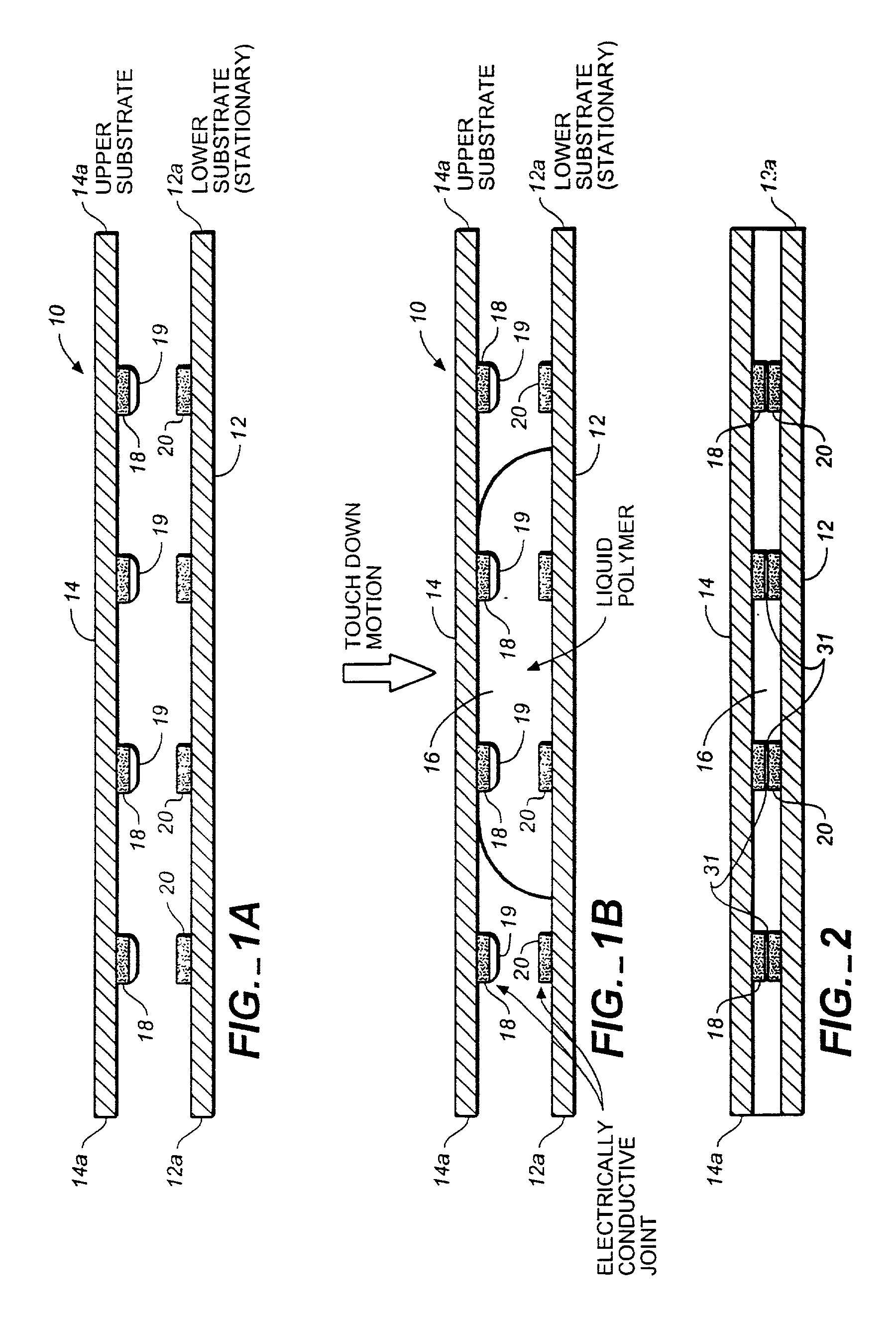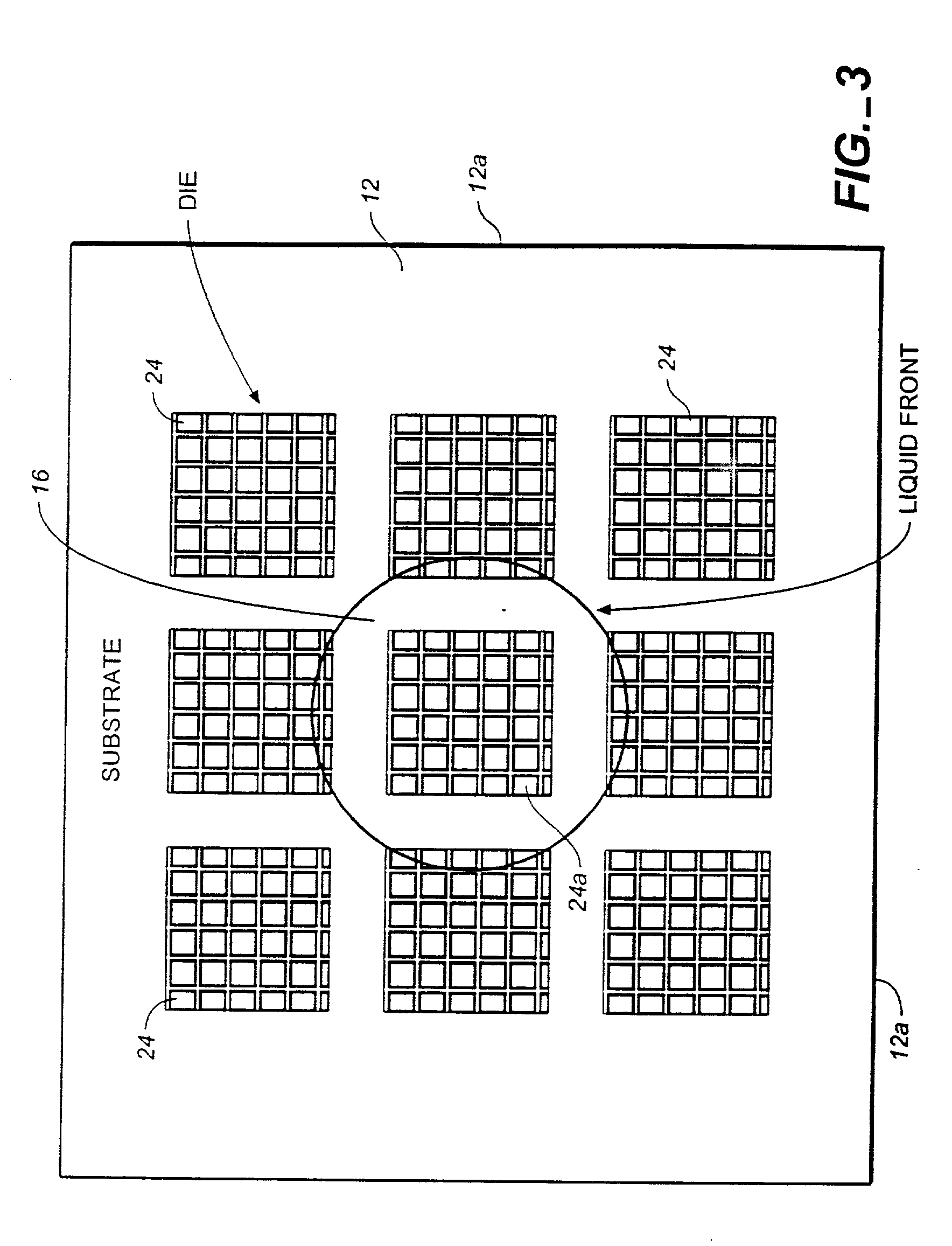Method for joining and an ultra-high density interconnect
a technology of interconnecting and high density, applied in the direction of printed circuit manufacturing, layered products, chemistry apparatus and processes, etc., can solve the problems of low yield of fine-pitch small bumps, limited solder bump size, and high cost of substrate buildup
- Summary
- Abstract
- Description
- Claims
- Application Information
AI Technical Summary
Problems solved by technology
Method used
Image
Examples
case ii
[0118] In Case II of FIGS. 53A-53B, the MCMs 204 are connected to two (2) daughter boards 206-206. The signal connections are through TF3DC 210 (see FIG. 57). The power / ground connections are directly through the MCM 204 substrates itself (see FIGS. 58-63). The daughter boards 206-206 are connected to the mother board 200 using the same arrangement as in Case I. The daughter boards 206-206 may arrange for the signal connections among the MCMs 204. With the daughter board 206, the structure of the mother board 200 can be simpler and the cost, cheaper.
case iii
[0119] In Case III of FIGS. 54A-54B, only one horizontal daughter board 206 is employed. The daughter board 206 may be connected to the mother board 200 through an area array connection 207 (for example, solder joints). The area array connection 207 is more preferable than Case II arrangement as the connection technology is simpler. The signal connections among the MCMs 204 may only go through one side of the MCM 204. The signal trace density in the daughter board 206 is higher than that in the Case II structure.
[0120] In Case IV of FIGS. 55A-55B, which is a combination of Case II and Case III, three (3) daughter boards 206-206-206 are employed. The structure of each of the daughter board 206 will be simpler. Also, the number of signal interconnect among the MCMs 204 can be higher if required.
[0121] Referring now to FIGS. 56-57 and as previously indicated, there is seen the connections between the MCMs 204 and the daughter board 206 (or the mother board 200). The signal connections ...
PUM
| Property | Measurement | Unit |
|---|---|---|
| surface area | aaaaa | aaaaa |
| melting point | aaaaa | aaaaa |
| melting point | aaaaa | aaaaa |
Abstract
Description
Claims
Application Information
 Login to View More
Login to View More - R&D
- Intellectual Property
- Life Sciences
- Materials
- Tech Scout
- Unparalleled Data Quality
- Higher Quality Content
- 60% Fewer Hallucinations
Browse by: Latest US Patents, China's latest patents, Technical Efficacy Thesaurus, Application Domain, Technology Topic, Popular Technical Reports.
© 2025 PatSnap. All rights reserved.Legal|Privacy policy|Modern Slavery Act Transparency Statement|Sitemap|About US| Contact US: help@patsnap.com



